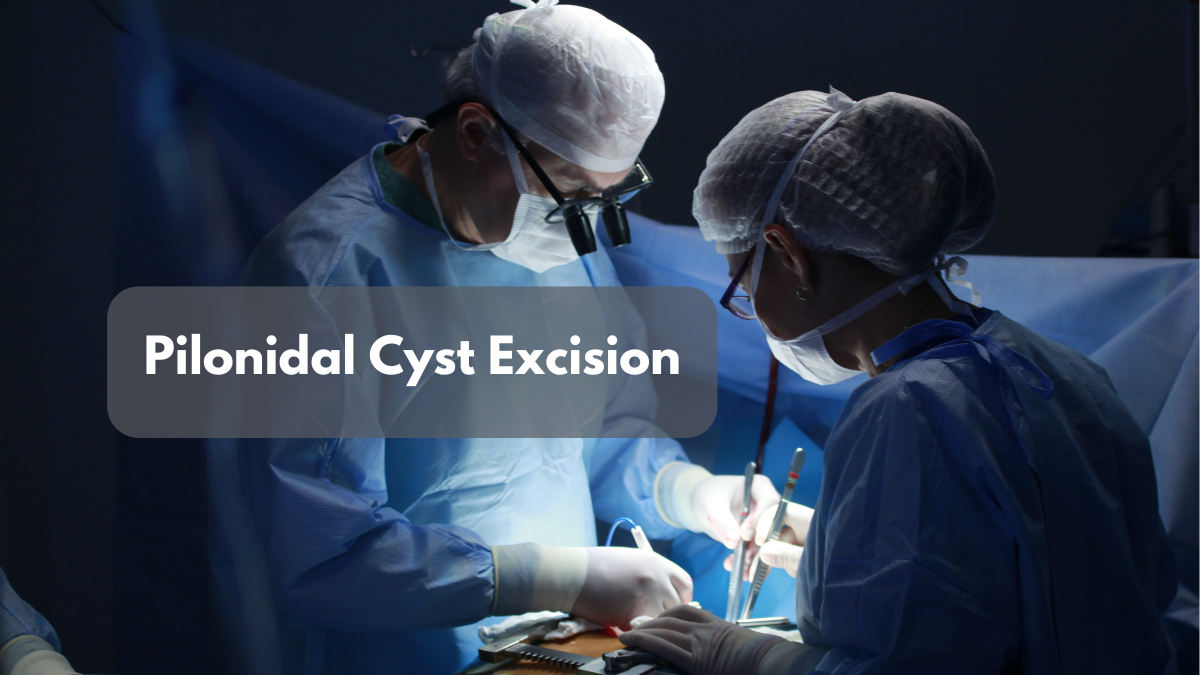People suffering from pilonidal cysts know how debilitating the condition can get. As home remedies and medication only provide temporary relief, pilonidal cyst excision is often seen as a distinctive solution for long-term relief. However, a high relapse rate of almost 30% is usually a cause of concern. However careful post-procedure care can help mitigate the risk. Here’s a complete guide to do’s and don’ts for a full and quick recovery from pilonidal sinus surgery:
Recovering From Pilonidal Sinus Surgery
Pilonidal sinus is an unwanted skin growth at the tailbone. It starts as a benign pimple in a hair follicle and gradually becomes a painful and uncomfortable cyst. Sitz bath and warm compress are often recommended for mild to moderate cases. In the case of pus-filled cysts, incision and drainage are usually the first line of action. But hard-to-treat cysts must be completely removed. The best way to treat a pilonidal sinus is the excision of a pilonidal cyst.
The recovery time depends upon the type of surgical intervention. The standard surgery procedure requires a longer recovery time due to an open wound. On the other hand, the rhomboid flap surgery closes the wound. This expedites recovery. However proper post-operative care is recommended for quick healing and faster recovery.
Recovery Timeline For Pilonidal Sinus Surgery
Depending upon the method of surgery, the final recovery time will vary. The recovery timelines for different methods are as follows:
- Incision and Drainage – 2-3 weeks for full recovery
- Excision With Open Wound – 3- 6 months for complete wound healing
- Excision With Closed Wound – 4 weeks for complete recovery
- Rhomboid Flap Surgery – 4-6 weeks for full recovery
Do’s And Don’ts After Pilonidal Cyst Excision Surgery
The right treatment for pilonidal sinus is important to minimize the chances of recurrence. But whatever the process of excision pilonidal cyst, appropriate post-procedure management is crucial. This can be divided into three heads:
- Wound Care
- Lifestyle Changes
- Personal Hygiene
Wound Care And Pain Management
The initial few days after surgery can be uncomfortable and painful. To help you sail through this phase comfortably, the colorectal surgeon will provide guidelines specifically tailored to your surgery type.
In the case of open wound procedures, cleaning the site and changing the gauze regularly is important. Regular wound inspection and monitoring are important to check for any signs of re-infection.
On the other hand, closed wounds are surgically packed. Follow-up with the doctor on all scheduled appointments is crucial for a complete inspection of the wound. Follow the complete medicine routine carefully as prescription medicines for pain and inflammation help manage the excruciating pain.
Lifestyle Changes
As the recurrence rate for pilonidal cysts is high, dietary and lifestyle adjustments become an essential part of a pilonidal cyst treatment plan.
Obesity significantly contributes to the risk of developing a cyst. Therefore, weight management is important. Eat a well-balanced and nutritionally rich diet. Avoid fried and spicy foods. Also, refrain from alcohol and smoking as they reduce the body’s self-healing abilities.
It is pertinent to mention that constipation immediately after surgery can complicate the matter. So make sure you drink plenty of water for tissue repair and overall health.
Exercise should be an integral part of daily routine. But during the initial phase after surgery, avoid strain on the surgical area. Also, refrain from heavy lifting and strenuous activities that may strain the wound. Talk to your doctor regarding when you can start light walking.
Friction and pressure exerted by wearing tight-fitting clothes can worsen the treatment outcomes. Prefer wearing light, comfortable, and loose-fitting clothes. Also, sleeping on your back will put pressure on the back and buttocks. Instead, sleep on your stomach or sideways to avoid pressure.
Personal Hygiene and Care
Poor hygiene habits are often seen as an important factor contributing to pilonidal cysts. Therefore, its management and prevention are closely associated with maintaining and following proper hygiene habits. Use mild, antibacterial soap to clean the area around the wound. Pat dry the area gently to remove any moisture.
Make sure there is no hair growth in the area. One can opt for a permanent laser hair removal or regularly shave or wax the area to keep it hair-free.
Avoid long sitting hours immediately after surgery. Try using a coccyx pillow when sitting on hard surfaces.
Final Thoughts
Recovering from pilonidal sinus surgery requires a combination of proper medical care, careful wound management, and making healthy lifestyle choices. The colorectal surgeon typically drafts the entire treatment plan and strategies for quick and effective recovery. By following these guidelines one can ensure a smooth and efficient recovery process.
The expertise and experience of your colorectal surgeon are important for a quick and complete recovery from pilonidal cysts. One of the leading colorectal surgeons in Beverly Hills, Dr. Allen Kamrava MD MBA has helped scores of patients suffering from this painful and uncomfortable condition. By adopting the latest advancements in science and devising a customized treatment plan, he helps patients bounce back quickly and get to daily chores with minimum downtime. Book an appointment to seek consultation about the recovery and prognosis of your case.
